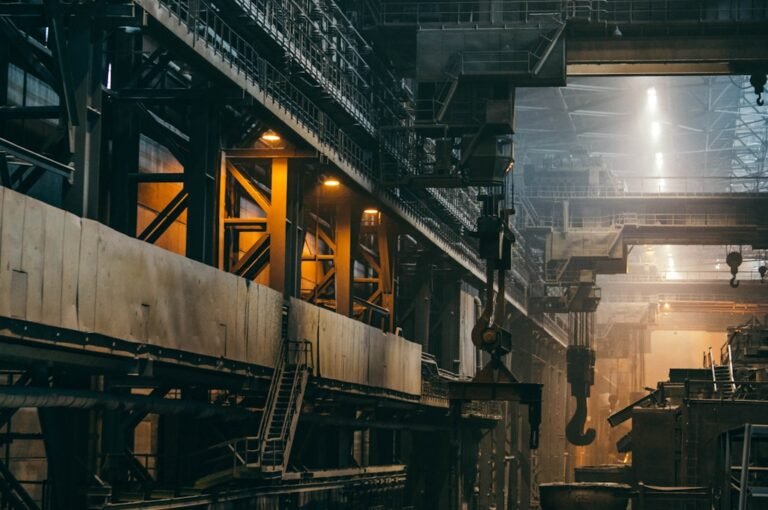Stainless steel flat bars are fundamental components in various construction and industrial applications. Their unique properties, such as high strength, durability, and resistance to corrosion, make them ideal for enhancing structural integrity in many environments. In this article, we explore the pivotal role of stainless steel flat bars, delving into their characteristics, advantages, and specific uses in modern construction.
Versatile applications in construction and architecture
One of the most significant reasons stainless steel flat bars are so highly regarded is their versatility. These bars are used in various applications, from heavy-duty industrial buildings to delicate architectural features. In construction, stainless steel flat bars are often employed as supporting structures, load-bearing components, and reinforcements for buildings that require both strength and aesthetic appeal.
Their ability to resist deformation under high loads makes them an excellent choice for large-scale projects like bridges and skyscrapers. On the other hand, their sleek appearance and customizable shapes allow architects to incorporate them into design elements such as handrails, brackets, and decorative accents. This combination of strength and design flexibility enables stainless steel flat bars to perform dual functions—enhancing both the aesthetics and durability of structures.
Flat bars also come in a variety of sizes and thicknesses, allowing engineers and designers to select the ideal specifications for their specific project needs. This adaptability further cements their place as an essential component in both functional and aesthetic aspects of construction.
Corrosion resistance: A key factor for structural longevity
One of the standout features of stainless steel flat bars is their unparalleled resistance to corrosion. Unlike other materials that degrade over time when exposed to moisture, chemicals, or extreme temperatures, stainless steel maintains its integrity even in harsh conditions. This characteristic is particularly valuable in structures exposed to marine environments, industrial chemical processing plants, or areas prone to humidity.
Corrosion can lead to significant weakening of structural components, jeopardizing the safety and stability of a building or structure. However, stainless steel’s protective oxide layer shields the material from rust and other forms of deterioration, ensuring long-term durability. This longevity reduces the need for frequent maintenance or replacement, offering both cost savings and environmental benefits through reduced resource consumption.
In addition, stainless steel flat bars contribute to the sustainability of construction projects. Since they require less maintenance and have a longer lifespan, they help lower the overall carbon footprint of the building by reducing the need for repairs and replacements. Their recyclability also means that when the bars do reach the end of their life cycle, they can be reused, contributing to a circular economy.
Strength and durability: The backbone of structural integrity
When it comes to load-bearing capacities, stainless steel flat bars offer superior strength compared to many other materials. Their high tensile strength ensures that they can support substantial weight without bending, cracking, or warping, even under extreme stress. This makes them an excellent choice for both small and large structures where safety is paramount.
In earthquake-prone regions, for example, the use of stainless steel flat bars helps buildings withstand seismic activity by providing extra reinforcement. Similarly, in industrial settings where machinery and heavy equipment exert constant pressure on structural components, stainless steel flat bars offer the necessary durability to maintain stability over time.
The strength of these bars also comes from the material’s ability to withstand both compression and tension forces, providing a well-rounded support system for any structure. Whether used in the construction of commercial buildings, residential complexes, or industrial plants, stainless steel flat bars ensure that the overall structure remains safe and reliable for years to come.
For high-quality steel products, including stainless steel flat bars, explore the offerings at https://rollsteel.eu/. This comprehensive range of products ensures you find exactly what your project needs to guarantee strength and durability in all conditions.
The role of stainless steel flat bars in sustainable construction
Sustainability has become a central concern in modern construction, and stainless steel flat bars play a vital role in helping builders meet green building standards. As mentioned earlier, their corrosion resistance and longevity contribute to less frequent material replacement, thus reducing waste. But the benefits extend beyond durability.
Stainless steel is a fully recyclable material. At the end of a structure’s life, the flat bars can be recycled without loss of quality, which is crucial for the sustainability goals of the construction industry. By reusing these materials, the environmental impact of new projects is greatly minimized, helping to conserve resources and reduce energy use in material production.
Moreover, the manufacturing process for stainless steel flat bars has become increasingly eco-friendly. Innovations in energy-efficient production methods have decreased the carbon footprint of creating these materials, making them a more sustainable choice for modern construction projects. Builders looking to create long-lasting, green structures increasingly turn to stainless steel as the material of choice for ensuring their projects stand the test of time while minimizing environmental impact.
Conclusion
Stainless steel flat bars are indispensable in enhancing the structural integrity of both modern and traditional construction projects. Their versatility allows them to be used in everything from industrial plants to architectural features, while their corrosion resistance ensures that structures remain strong and safe for extended periods. The strength of stainless steel flat bars makes them reliable for load-bearing applications, ensuring structural stability under various environmental and physical stresses.
Furthermore, their role in sustainable construction cannot be overlooked. By using stainless steel flat bars, builders are not only ensuring durability and safety but also contributing to the creation of more eco-friendly and long-lasting structures. Stainless steel’s recyclability and the continuous improvements in its production process make it a cornerstone in the development of sustainable building practices for the future.
For those involved in construction and design, stainless steel flat bars represent more than just a material—they are a commitment to building with integrity, strength, and sustainability.

Odyssey has been the lead content writer and content marketer. He has vast experience in the field of writing. His SEO strategies help businesses to gain maximum traffic and success.

